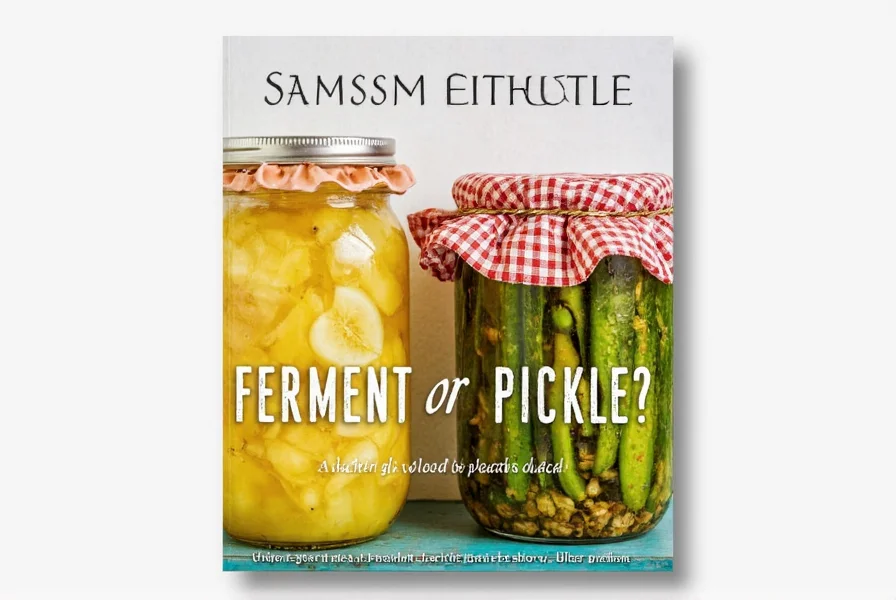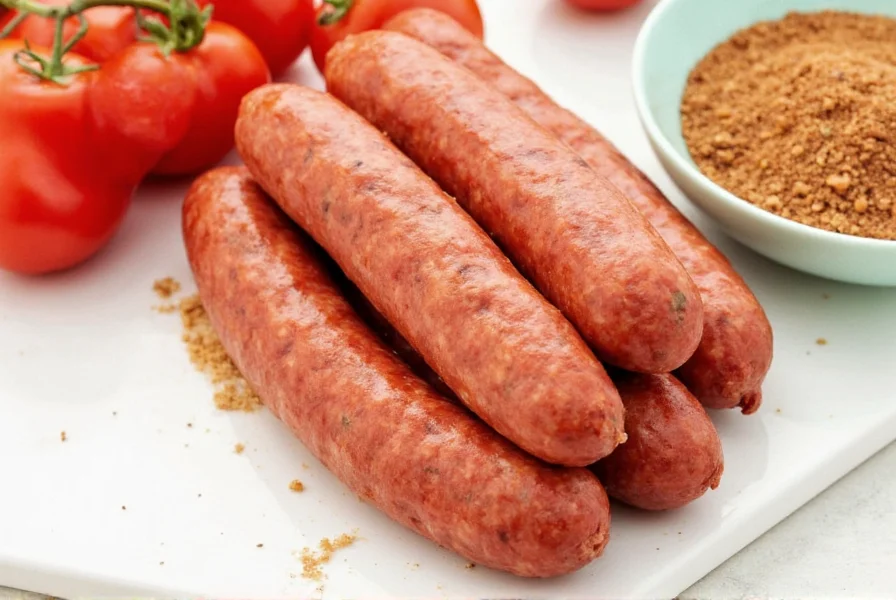The Sweet Truth: 7 Irresistible Secrets Behind Italian Sausage Seasoning
If you’ve ever bitten into a juicy sweet Italian sausage and thought, “What gives it that perfect flavor?” — you're not alone. The secret is in the seasoning. In this deep dive, we’ll uncover what makes sweet Italian sausage seasoning so crave-worthy, how to make your own at home, and why some store-bought blends just don’t hit the same.
Table of Contents
- What Exactly Is Sweet Italian Sausage Seasoning?
- Core Ingredients That Make It Magical
- DIY Magic: How to Make Your Own Blend
- Buying Guide: Top Brands Reviewed
- Creative Ways to Use This Flavor Bomb Beyond Sausage
- How to Store & Preserve for Peak Flavor
- FAQs: All Your Burning Questions Answered
What Exactly Is Sweet Italian Sausage Seasoning?
You might be thinking: isn’t all Italian sausage seasoning the same? Spoiler: nope. While hot Italian sausage gets its punch from red pepper flakes or cayenne, sweet Italian sausage seasoning leans on milder herbs and spices to deliver big, bold flavor without the fire.
This blend typically features a combination of fennel seed (or fennel powder), garlic, onion, paprika, and a handful of aromatic herbs like basil, thyme, and oregano. Together, they create a balanced, slightly licorice-like warmth with a savory backbone.
The Difference Between Sweet & Hot Italian Sausage Seasoning
| Characteristic | Sweet Italian | Hot Italian |
|---|---|---|
| Primary Heat Source | None | Red Pepper Flakes |
| Fennel Presence | High | Moderate |
| Herb Complexity | Rich and Balanced | Bolder and Simpler |
| Best For | Classic breakfast links, pasta dishes | Spicy grilled sausages, chili, pizza |
Core Ingredients That Make It Magical
To understand why sweet Italian sausage seasoning works so well, let’s break down the stars of the show:
- Fennel Seed: The heart and soul of Italian sausage. Fennel brings a subtle anise-like flavor that’s earthy and fragrant. Whole seeds are often lightly crushed before use to release their oils.
- Garlic Powder: Adds depth and savoriness. Fresh garlic can be used too, but powdered form distributes flavor more evenly throughout the meat.
- Onion Powder: Complements garlic by adding sweetness and umami. Again, powdered form ensures consistency.
- Paprika: Often smoked paprika, which adds color and a gentle smokiness. Not always traditional, but it enhances complexity.
- Dried Herbs (Oregano, Basil, Thyme): These give the seasoning its herbal richness. Oregano is particularly common in Southern Italian blends.
- Black Pepper: A must for balance and slight heat. Ground black pepper integrates easily and avoids texture issues.
Optional Add-Ins for Customization
Want to personalize your blend? Try these optional extras:
- Anise Seed (for extra licorice notes)
- Celery Seed (adds bitterness to contrast sweetness)
- Nutmeg (hint of warmth in Northern Italian versions)
DIY Magic: How to Make Your Own Blend
Why buy when you can make your own? Here’s a foolproof homemade recipe that will turn any ground pork into restaurant-quality sausage.
Homemade Sweet Italian Sausage Seasoning Recipe
- 2 tbsp fennel seeds
- 1 tsp garlic powder
- 1 tsp onion powder
- 1 tsp paprika (preferably smoked)
- ½ tsp dried oregano
- ½ tsp dried basil
- ¼ tsp ground black pepper
- Optional: ¼ tsp crushed red pepper (for mild heat)
Instructions
- Toast the whole fennel seeds in a dry skillet over medium heat until fragrant (about 2–3 minutes).
- Crush them lightly with a mortar and pestle or pulse once or twice in a spice grinder.
- Combine all ingredients in a bowl, mix thoroughly, and store in an airtight container.
- Use about 2–3 tablespoons per pound of ground pork or turkey for classic homemade sausage.
Buying Guide: Top Brands Reviewed
If DIY isn’t your thing (no judgment!), here are some top-notch store-bought blends that nail the sweet Italian sausage flavor. We evaluated each based on flavor profile, ingredient transparency, usability, and price-to-value ratio.
| Brand | Flavor Notes | Key Ingredients | Best For | Price Range |
|---|---|---|---|---|
| McCormick Italian Seasoning | Earthy and balanced with strong basil presence | Marjoram, thyme, oregano, garlic, fennel | Quick meals, marinades, sauces | $ |
| Spice Islands Italian Sausage Seasoning | Authentic fennel-forward blend | Fennel, garlic, paprika, pepper | Homemade sausage making | $$ |
| Badia Italiano Seasoning | Mild and versatile, slightly sweet | Oregano, basil, fennel, garlic, onion | Pasta, chicken, veggies | $ |
| Penzeys Fennel Sausage Seasoning | Robust fennel and garlic kick | Fennel seed, garlic, celery salt, mustard | Grilled meats, stuffing, kebabs | $$$ |
| Trader Joe’s Italian Sausage Seasoning | Mild and slightly buttery | Fennel, onion, paprika, marjoram | Weeknight dinners, slow cooker dishes | $ |
Creative Ways to Use This Flavor Bomb Beyond Sausage
Don’t limit this amazing blend to just sausage! Here are five deliciously unexpected ways to put sweet Italian sausage seasoning to work:
- Popcorn Popper: Toss freshly popped popcorn with melted butter and a generous sprinkle of seasoning for a savory, addictive snack.
- Roasted Veggie Boost: Toss carrots, zucchini, or Brussels sprouts in olive oil and seasoning before roasting. Perfect side dish!
- Italian-Style Butter: Mix into softened butter for spreading on cornbread, steak, or grilled bread.
- Marinade Magic: Combine with olive oil, lemon juice, and vinegar for a zesty marinade for chicken or pork chops.
- Homemade Pizza Seasoning: Sprinkle over pizza dough before baking or on finished slices for an instant flavor lift.
How to Store & Preserve for Peak Flavor
Like most spice blends, sweet Italian sausage seasoning loses potency over time. To keep it tasting fresh:
- Store in a cool, dark place like a pantry or cupboard.
- Use airtight glass jars or shakers to protect against moisture and oxidation.
- Avoid exposing the blend to heat or direct sunlight.
- Label your homemade mixes with the date to track freshness.

Shelf Life Chart
| Type | Expected Shelf Life |
|---|---|
| Whole Seeds | 2–3 years |
| Ground Spices | 6 months–1 year |
| Blended Seasonings | 6–12 months |
FAQs: All Your Burning Questions Answered
Can I Use Sweet Italian Sausage Seasoning in Vegetarian Dishes?
Absolutely! Just skip the meat and use it to season portobello mushrooms, tofu crumbles, eggplant, or roasted cauliflower.
Is There a Substitute If I Don’t Have Sweet Italian Seasoning?
Yes! Combine equal parts oregano, basil, garlic powder, and a dash of fennel. Adjust to taste for similar flavor.
Can I Freeze the Seasoning?
While freezing won't hurt the blend, it’s unnecessary. Room temperature storage is perfectly fine.
Can I Make It Gluten-Free?
Most blends are naturally gluten-free, but always check packaging if buying pre-made. Homemade is safest for GF diets.
What's the Best Meat to Pair With Sweet Italian Seasoning?
Traditionally pork, but it also works beautifully with turkey, chicken, and even lamb for a unique twist.
Conclusion
Sweet Italian sausage seasoning isn’t just for making sausage — it’s a gateway to a world of flavor. Whether you’re crafting your own blend or reaching for a trusted brand, mastering this spice mix opens up endless culinary possibilities.
So go ahead: sprinkle it on roasted vegetables, jazz up your popcorn, or stuff it into your next batch of homemade links. Once you discover the magic of this seasoning, you’ll wonder how you ever cooked without it.












 浙公网安备
33010002000092号
浙公网安备
33010002000092号 浙B2-20120091-4
浙B2-20120091-4